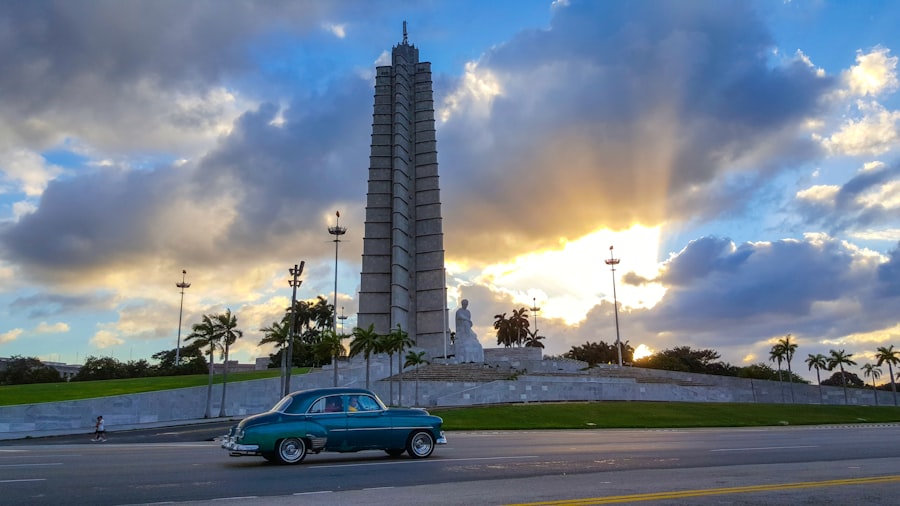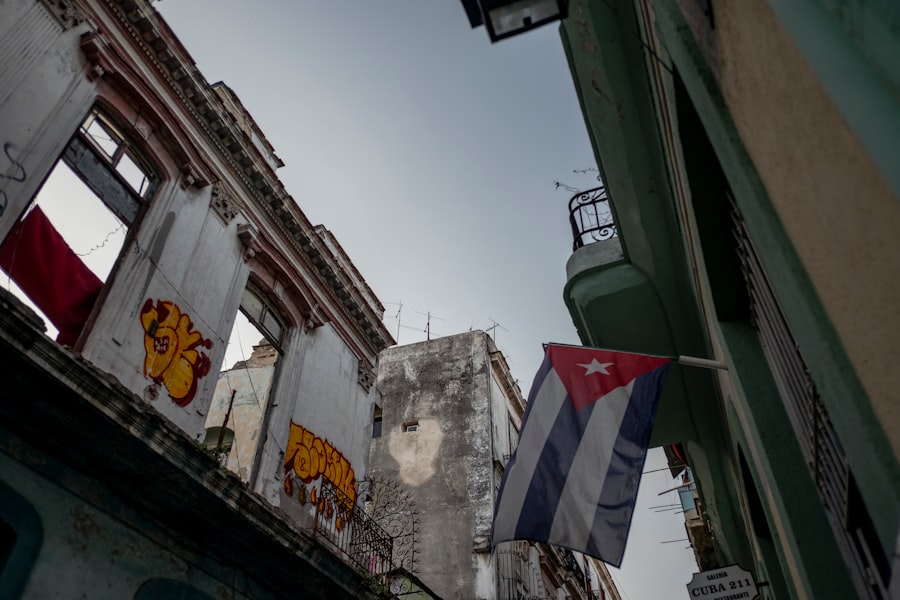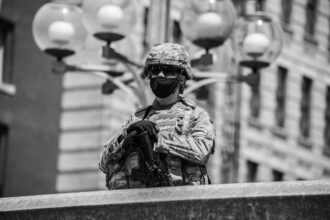The Cuban Missile Crisis, a pivotal moment in Cold War history, can be traced back to the complex interplay of geopolitical tensions that characterized the post-World War II era. Following the war, the world was divided into two major ideological camps: the capitalist West, led by the United States, and the communist East, spearheaded by the Soviet Union. This ideological rift was exacerbated by events such as the Korean War and the establishment of NATO, which heightened fears of communist expansion.
Cuba, under the leadership of Fidel Castro, emerged as a focal point of this tension after its revolution in 1959, which saw the overthrow of the U.S.-backed dictator Fulgencio Batista. Castro’s alignment with the Soviet Union was seen as a direct threat to U.S. interests in the region.
The U.S. response to Castro’s regime was marked by a series of aggressive policies aimed at undermining his government. The failed Bay of Pigs invasion in 1961, orchestrated by the CIA, only solidified Castro’s resolve and pushed him further into the arms of the Soviets.
In this context, the Soviet Union, led by Nikita Khrushchev, sought to bolster its influence in Latin America and counter U.S. dominance by establishing a military presence in Cuba. This strategic decision would ultimately lead to one of the most dangerous confrontations in modern history.
Key Takeaways
- The Cuban Missile Crisis originated from the Soviet Union’s decision to place nuclear missiles in Cuba, just 90 miles from the U.S. coast.
- The discovery of Soviet missiles in Cuba by U.S. intelligence sparked a tense standoff between the two superpowers, bringing the world to the brink of nuclear war.
- The U.S. response to the Cuban Missile Crisis included a naval blockade of Cuba and a demand for the removal of the missiles, leading to a high-stakes confrontation with the Soviet Union.
- Secret negotiations between the U.S. and the Soviet Union, facilitated by backchannel communication, ultimately led to a resolution that averted a nuclear conflict.
- Cuban leader Fidel Castro played a significant role in the crisis, advocating for a strong response against the U.S. and expressing frustration with the Soviet Union’s handling of the situation.
The Discovery of Soviet Missiles in Cuba
The crisis reached its boiling point in October 1962 when American reconnaissance flights over Cuba revealed the presence of Soviet nuclear missiles on the island. These missiles were capable of striking major U.S. cities within minutes, fundamentally altering the balance of power in the region.
The discovery was made on October 14, when a U-2 spy plane captured photographic evidence of missile sites under construction. This revelation sent shockwaves through Washington, as it became clear that the Soviet Union had placed nuclear weapons just 90 miles from the U.S. mainland.
In the days that followed, President John F. Kennedy and his advisors grappled with the implications of this intelligence. The presence of these missiles not only posed an immediate threat to national security but also represented a significant escalation in the Cold War.
The U.S. had long been concerned about Soviet expansionism, and this development was seen as a direct challenge to American authority in the Western Hemisphere. As tensions mounted, Kennedy faced immense pressure to respond decisively while avoiding a potential nuclear confrontation.
In response to the discovery of missiles in Cuba, President Kennedy convened a group of advisors known as the Executive Committee of the National Security Council (ExComm). This group deliberated on various options, ranging from airstrikes to a full-scale invasion of Cuba. Ultimately, Kennedy opted for a naval blockade, which he referred to as a “quarantine,” to prevent further shipments of military equipment to Cuba.
This decision was rooted in a desire to avoid immediate military confrontation while still demonstrating U.S. resolve. The announcement of the blockade on October 22, 1962, marked a critical moment in the crisis.
Kennedy addressed the nation in a televised speech, informing Americans about the situation and outlining his administration’s response. He emphasized that any missile launched from Cuba would be met with retaliation against the Soviet Union, thereby raising the stakes significantly. The blockade was intended not only to halt further military supplies but also to buy time for diplomatic negotiations and potential resolutions to the crisis.
As tensions escalated and both sides prepared for potential military action, secret negotiations began between U.S. and Soviet officials. Backchannel communications were established to facilitate dialogue and explore possible solutions to de-escalate the situation.
Kennedy, who engaged directly with Soviet Ambassador Anatoly Dobrynin. These discussions were fraught with tension but ultimately aimed at finding common ground to avert disaster.
The negotiations revealed that both superpowers were acutely aware of the catastrophic consequences that a nuclear conflict could entail.
The U.S.
ultimately agreed to a secret proposal: if the Soviets withdrew their missiles from Cuba, America would not only lift the blockade but also secretly agree to remove its Jupiter missiles from Turkey, which were positioned close to Soviet borders. This compromise was crucial in paving the way for a peaceful resolution.
The Role of Cuban Leader Fidel Castro in the Crisis

Fidel Castro’s role in the Cuban Missile Crisis cannot be understated; he was both a key player and an unwilling participant in this high-stakes drama. While he sought to strengthen Cuba’s position against perceived U.S. aggression, he was also aware that his country was caught in a dangerous game between two superpowers.
Castro had welcomed Soviet support as a means of bolstering his regime and deterring American intervention, but he was not fully informed about Khrushchev’s intentions regarding missile deployment. As events unfolded, Castro grew increasingly concerned about the potential for nuclear war and urged Khrushchev to take a more aggressive stance against U.S. threats.
He believed that a show of strength was necessary to protect Cuba’s sovereignty and deter American aggression once and for all. However, Castro’s calls for action were met with caution from Khrushchev, who understood that escalating tensions could lead to catastrophic consequences for both Cuba and the Soviet Union.
The Impact of the Crisis on Global Politics
| Metrics | Impact |
|---|---|
| International Cooperation | Decreased due to focus on domestic issues |
| Global Leadership | Shifted as countries handle crisis differently |
| Geopolitical Tensions | Increased due to competition for resources |
| Multilateral Organizations | Under strain as member states prioritize own interests |
The Cuban Missile Crisis had far-reaching implications for global politics and international relations during the Cold War era. It marked a turning point in how superpowers approached nuclear weapons and military confrontations. The crisis underscored the dangers of brinkmanship and highlighted the need for better communication between rival nations to prevent misunderstandings that could lead to catastrophic outcomes.
In the aftermath of the crisis, both superpowers recognized that they needed mechanisms in place to manage their rivalry more effectively. This realization led to significant developments such as the establishment of a direct communication line between Washington and Moscow, known as the “hotline,” which aimed to facilitate rapid communication during times of crisis. Additionally, arms control agreements began to emerge as both sides sought to limit nuclear proliferation and reduce tensions through diplomacy rather than military confrontation.
The Declassification of Secret Documents Related to the Crisis
Over time, many aspects of the Cuban Missile Crisis remained shrouded in secrecy until various documents were declassified, shedding light on previously unknown details and decisions made during this tense period. In subsequent years, historians and researchers gained access to classified materials that revealed insights into both U.S. and Soviet strategies during the crisis.
These declassified documents provided valuable context regarding decision-making processes within both governments and highlighted how close they came to nuclear conflict. They also illustrated how miscommunication and misinterpretation could have led to disastrous consequences if not for careful diplomacy and negotiation efforts behind closed doors.
The Cuban Perspective on the Missile Crisis

From Cuba’s perspective, the missile crisis represented a moment of both vulnerability and defiance. While Castro sought Soviet support to protect his regime from perceived U.S. aggression, he also recognized that his country was being used as a pawn in a larger geopolitical struggle between superpowers.
The presence of Soviet missiles on Cuban soil was intended as a deterrent against American intervention but also placed Cuba at significant risk during this tense standoff. Cuban leaders viewed their alliance with the Soviet Union as essential for national sovereignty and security; however, they were acutely aware that their fate rested largely in the hands of Moscow’s decisions during negotiations with Washington. The crisis ultimately reinforced Castro’s belief in maintaining strong ties with the Soviet Union while simultaneously fostering a sense of national pride among Cubans who felt they were standing up against imperialist forces.
The Legacy of the Cuban Missile Crisis
The legacy of the Cuban Missile Crisis continues to resonate in contemporary discussions about nuclear weapons and international relations. It serves as a stark reminder of how close humanity came to nuclear annihilation during one of history’s most perilous moments. The crisis highlighted not only the dangers inherent in nuclear arsenals but also underscored the importance of diplomacy and communication in averting conflict.
In educational settings around the world, students learn about this critical event as an example of how miscalculations can lead to catastrophic outcomes. The lessons drawn from this crisis have influenced subsequent arms control agreements and shaped policies aimed at preventing similar confrontations from occurring in an increasingly complex global landscape.
New Revelations and Insights from Recently Uncovered Documents
Recent years have seen an influx of new revelations stemming from previously classified documents related to the Cuban Missile Crisis. Scholars have uncovered details about internal debates within both U.S. and Soviet leadership regarding their respective strategies during this tense period.
These insights have provided historians with a more nuanced understanding of how decisions were made under pressure and how leaders navigated competing interests. One particularly striking revelation involved discussions among Kennedy’s advisors about potential military options versus diplomatic solutions. These documents illustrate how close some officials were to advocating for military action while others pushed for restraint—a dynamic that ultimately shaped how events unfolded during those critical days in October 1962.
Lessons Learned from the Cuban Missile Crisis for Today’s World Leaders
The Cuban Missile Crisis offers invaluable lessons for today’s world leaders grappling with complex geopolitical challenges and nuclear proliferation concerns. One key takeaway is the importance of open lines of communication between rival nations; misunderstandings can escalate tensions rapidly if leaders do not engage directly with one another. Additionally, leaders must recognize that diplomacy is often more effective than military action when addressing conflicts between nations with significant power disparities.
The crisis demonstrated that careful negotiation can yield positive outcomes even amid intense pressure—an essential lesson for contemporary leaders navigating today’s multifaceted global landscape. In conclusion, while history may not repeat itself exactly, it often provides critical insights into human behavior during times of crisis—insights that remain relevant as leaders confront new challenges on an increasingly interconnected stage.
The Cuban Missile Crisis remains one of the most intense moments in Cold War history, with many secrets and strategies still being analyzed today. For those interested in delving deeper into the clandestine operations and decisions made during this pivotal time, a related article can be found on the War Room website. This article provides insights into the behind-the-scenes maneuvers and the high-stakes diplomacy that characterized the crisis. To explore more about these hidden aspects, you can read the article by visiting this link.
WATCH THIS 🤯How the KGB Stole America’s Future
FAQs
What was the Cuban Missile Crisis?
The Cuban Missile Crisis was a 13-day confrontation in October 1962 between the United States and the Soviet Union over Soviet ballistic missiles deployed in Cuba. It is considered one of the closest times the world came to nuclear war during the Cold War.
What were the secrets of the Cuban Missile Crisis?
The secrets of the Cuban Missile Crisis include the covert deployment of Soviet missiles in Cuba, the negotiations and communications between the US and the Soviet Union, and the behind-the-scenes decision-making processes of both countries.
What were some of the key events during the Cuban Missile Crisis?
Key events during the Cuban Missile Crisis included the discovery of the missile sites in Cuba by US intelligence, President Kennedy’s address to the nation, the naval blockade of Cuba, and the eventual agreement between the US and the Soviet Union to remove the missiles.
How were the secrets of the Cuban Missile Crisis revealed?
Many of the secrets of the Cuban Missile Crisis were revealed through declassified documents, memoirs of key figures involved, and historical research. These sources have provided insight into the decision-making processes and the behind-the-scenes negotiations that took place during the crisis.
What impact did the Cuban Missile Crisis have on the world?
The Cuban Missile Crisis had a significant impact on the world, leading to increased efforts to reduce the risk of nuclear war, the establishment of a direct communication link between the US and the Soviet Union (the “hotline”), and a shift in the dynamics of the Cold War. It also highlighted the dangers of nuclear brinkmanship and the need for diplomatic solutions to international conflicts.




